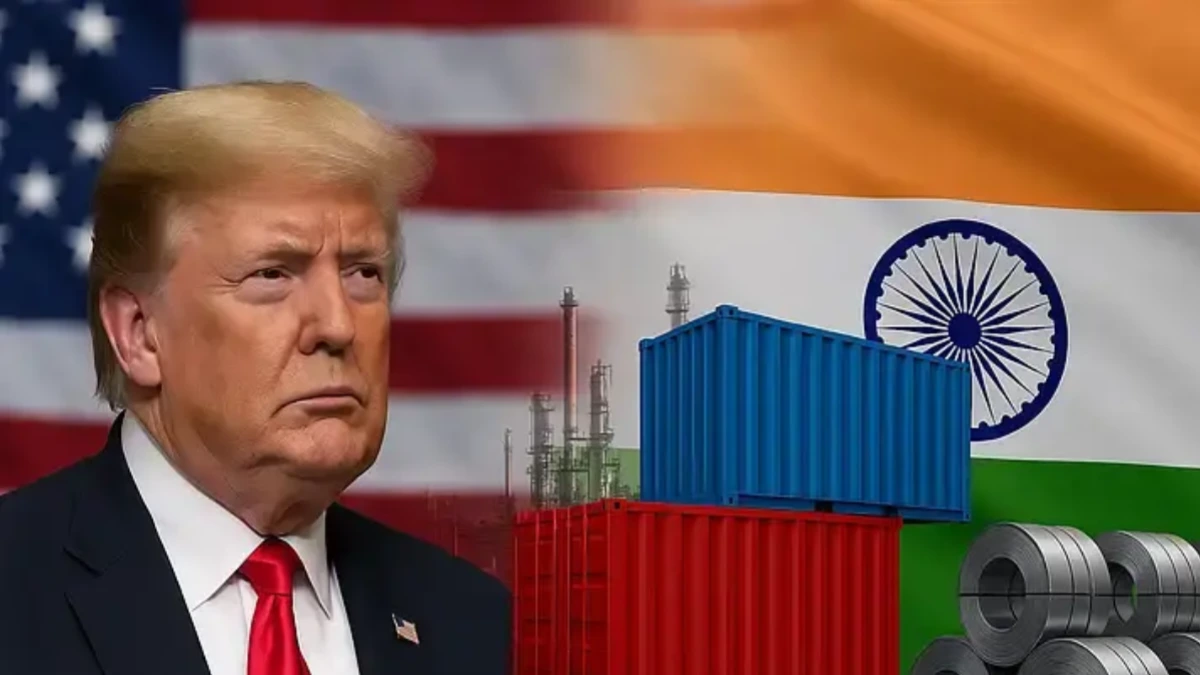NEW DELHI — India and the United States are nearing completion of a long pending bilateral trade deal that would significantly reduce US tariffs on Indian imports to around 15 to 16 percent from as high as 50 percent, according to a report by Mint citing three officials familiar with the talks.
The move could reshape trade flows between the two largest democracies and signal a recalibration of India’s energy dependence on Russia.
The agreement, which hinges on agricultural and energy concessions, could be formally announced at the upcoming ASEAN Summit, where leaders are expected to highlight renewed trade cooperation.
Trade negotiations between India and the United States have been stalled for several years, primarily over market access, tariffs, and agricultural import restrictions.
The latest push comes as both nations look to strengthen strategic ties in response to shifting geopolitical dynamics, particularly amid tensions surrounding Russia and China.
Former President Donald Trump said Tuesday he had spoken with Indian Prime Minister Narendra Modi, focusing largely on trade and energy.
Trump said Modi assured him that India would limit its purchases of Russian crude oil, a commitment viewed as key to the deal’s finalization.
“President Trump and Prime Minister Modi’s renewed engagement on trade shows the strategic maturity of both governments,” said Meera Kapoor, a senior fellow at the Centre for Trade and Economic Policy in New Delhi.
“Lowering tariffs could unlock billions in bilateral commerce, especially in sectors like textiles, pharmaceuticals, and energy.” Economists say the potential reduction in US tariffs on Indian imports would mark one of the most significant trade realignments between the two countries in recent years.
The 15 To 16 percent tariff range brings India closer to the treatment extended to US partners under existing free trade agreements, said Dr. Rajiv Menon, a trade economist at the Indian Institute of Foreign Trade.
“If implemented, it could help Indian exporters of textiles, auto components, and information technology hardware regain lost competitiveness in the American market.”
Experts also note that Washington’s willingness to cut tariffs is likely tied to India’s gradual commitment to reduce crude imports from Russia.
Since 2022, India has emerged as one of the top buyers of discounted Russian oil, drawing scrutiny from Western allies seeking to curb Moscow’s energy revenues.
According to Mint, the proposed trade package may include a phased reduction of Indian crude purchases from Russia and a mechanism to periodically review tariff levels and market access commitments.
Trade between India and the United States stood at nearly $200 billion in 2024, up from $191 billion the previous year, making the U.S. India’s largest trading partner.
However, Indian exports to the US have faced steep tariffs since Washington withdrew India’s benefits under the Generalized System of Preferences (GSP) in 2019.
The removal of GSP status raised tariffs on several Indian goods, including leather products, engineering equipment, and chemicals, from under 10 percent to nearly 50 percent in some categories. The new deal could restore some of that lost ground.
“Restoring tariff parity could help small and medium Indian exporters who were disproportionately affected by the loss of GSP,” said Priya Nair, director of the Federation of Indian Export Organizations.
“A 15 percent tariff band would bring back cost efficiency and enhance predictability for our trade community.” In Mumbai’s textile hub, business owners expressed cautious optimism.
“US buyers pulled back after 2019 because our prices became uncompetitive due to high tariffs,” said Ramesh Patel, owner of a mid sized garment export firm. “If the tariffs come down, we could see orders rise by at least 20 percent within months.”
Farmers in the Indian states of Punjab and Madhya Pradesh, however, voiced concern about the reported possibility of allowing imports of non genetically modified US corn and soymeal.
“We must ensure that any new imports don’t hurt domestic farmers,” said Baldev Singh, a grain farmer near Ludhiana. “If US corn floods the market, local prices will fall. There should be safeguards in place.”
In Washington, industry groups have welcomed the potential breakthrough. “American energy and agriculture producers have long sought a level playing field in India,” said Mark Douglas, spokesperson for the US India Business Council.
This deal could help stabilize trade relations and enhance food and energy security on both sides. The deal is expected to be finalized in time for the ASEAN Summit later this month, where both Modi and Trump are scheduled to meet regional leaders.
Officials in New Delhi said final touches were being made to the text of the agreement, which may include a review mechanism every two years.
Analysts believe the trade pact could pave the way for a broader strategic economic partnership, possibly setting the foundation for a limited free trade agreement in the future.
“This is less about tariffs and more about trust,” said trade analyst Nisha Reddy. “If India shows flexibility on energy sourcing, and the US responds with fairer market access, the long term gains could be substantial for both economies.”
While neither the Indian Ministry of Commerce nor the White House has confirmed the timeline, both sides have refrained from denying the reports, suggesting that negotiations are in their final phase.
If completed, the deal would represent one of the most significant advances in India US trade relations in over a decade, underscoring the growing importance of economic diplomacy in shaping global power balances.

